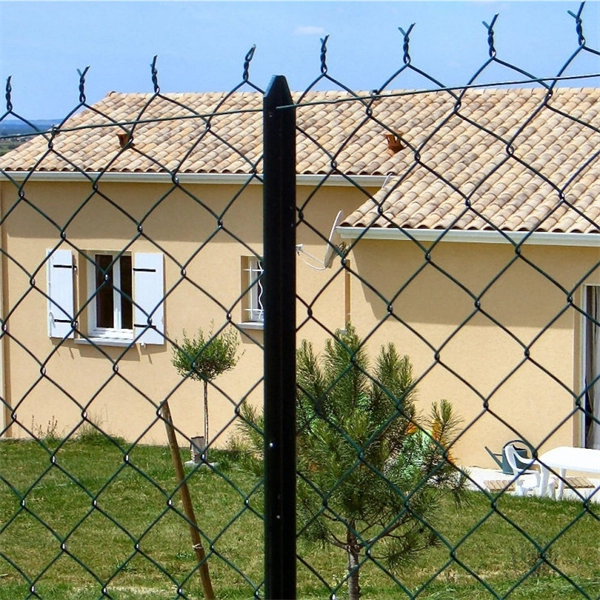Desemba . 12, 2024 10:09 Back to list
china gabion garden bed
The Rise of Gabion Garden Beds A Modern Sustainable Solution
In recent years, gardening enthusiasts and landscape designers have been increasingly turning to innovative design solutions to create sustainable and aesthetically pleasing outdoor spaces. One such solution that is gaining widespread popularity is the use of gabion garden beds. Originating from ancient civil engineering practices, gabions are wire mesh containers filled with rocks or stones, traditionally used for erosion control and retaining walls. However, their versatility has made them a fashionable choice for modern gardens.
What are Gabion Garden Beds?
Gabion garden beds are essentially raised planter boxes constructed from wire mesh and filled with various materials, typically stones, bricks, or gravel. The wire mesh allows for excellent drainage, which is crucial for plant health, while also providing the necessary structure to support the weight of the filled materials. These eye-catching garden installations come in various shapes and sizes, making them customizable to fit any landscape design.
Benefits of Gabion Garden Beds
1. Sustainability Gabion beds can be created from recycled materials, making them an environmentally friendly option. Using locally-sourced stone not only minimizes transportation emissions but also integrates seamlessly with the local landscape.
2. Aesthetic Appeal The rustic charm of stones in a wire mesh creates a visual interest that can complement both contemporary and traditional garden designs. Gabion beds can be stacked or arranged to add height and dimension, enhancing the overall appearance of outdoor spaces.
3. Versatility Gabion beds can host a variety of plants, from flowering perennials to herbs and vegetables. With the right plant selection, these beds can add color and texture throughout the seasons. Additionally, they can serve as decorative elements, retaining walls, or even seating areas in the garden.
4. Durability Gabion structures are built to last. The heavy stone filling provides stability, while the metal mesh is resistant to weather elements. This means lower maintenance and longer-lasting garden features compared to traditional wooden raised beds, which can rot over time.
5. Easy to Assemble Constructing gabion beds can be a DIY-friendly project. With basic tools and materials, anyone can set up their own beds with relative ease. The modular nature of gabions allows for creativity in design and function.
china gabion garden bed

How to Create Your Own Gabion Garden Bed
Creating a gabion garden bed is a straightforward process
. Here’s a simple step-by-step guide1. Select Your Location Choose a flat area in your garden that receives adequate sunlight for the plants you wish to grow.
2. Gather Materials Purchase or gather gabion cages from a garden supplier, as well as your chosen stone or gravel filling.
3. Assemble the Gabion Cages Following the manufacturer's instructions, assemble the cages. Make sure they are secure and stable for filling.
4. Fill the Cages Start filling the cages with your chosen stones, ensuring that they are evenly distributed and packed tightly.
5. Plant Once the cages are filled, you can add soil on top of the stones or directly plant in the empty spaces. For improved aesthetics, integrate herbs, flowering plants, or foliage that complements your garden theme.
6. Maintain Keep an eye on soil moisture and ensure proper care for your plants. Since gabion beds allow for excellent drainage, they often require regular watering depending on plant selection and local climate conditions.
Conclusion
Gabion garden beds are transforming the way we think about gardening and landscape design. Their combination of functionality, sustainability, and aesthetic appeal makes them a prudent choice for both novice and experienced gardeners. As the trend continues to gain momentum, it’s clear that gabions are more than just a passing fad; they're a sustainable solution for modern gardening that promises to enhance outdoor living spaces for years to come.
-
HESCO Gabion Baskets for Coastal Erosion Prevention
NewsAug.22,2025
-
Longevity and Durability of River Rock Gabion Walls
NewsAug.22,2025
-
How to Integrate Gabion 3D Walls in Urban Planning
NewsAug.22,2025
-
Reno Mattress Gabion Applications in Civil Engineering
NewsAug.22,2025
-
How to Install Wire Mesh for Gabion Baskets Properly
NewsAug.22,2025
-
Best Materials for Filling a Chain Link Gabion
NewsAug.22,2025
-
Wire Mesh Thickness Impact on Gabion Wall Load Bearing
NewsAug.12,2025






